Pete Jorgensen
Plant Science & Horticulture
Homegardens, the Changing Environment, & Biodiversity
An opportunity to build social, ecological, and food security buffers to contemporary challenges?
As with most periods of the past, the 21st century presents environmental challenges to humans: increased inter-annual variability of temperature, altered hydrological systems, changing sunlight hours, more extreme weather events, desertification and precarious seasonality (Field & Barros, 2014). In addition, population growth is forecast to continue for decades, encumbering attempts to mitigate humanity’s impact on climate change (Satterthwaite, 2009). The Kyoto Protocol (1997) defines climate change as: “a change of climate which is attributed directly or indirectly to human activity that alters the composition of the global atmosphere and which is in addition to natural climate variability.”
By contrast, there is no consensus definition of a homegarden in the literature. Frequently stipulated attributes include: proximity to the home, small-scale, many different plants grown, multi-storey cropping systems, an element of subsistence production and a diversity of plant usage (i.e. food, medicine, firewood, fibres, ritual, social) (Galhena et al., 2013; Vogl et al., 2004; Hoogerbrugge, 1993; Galluzzi et al., 2010). In countries such as the UK, where high population density leads to compact housing with limited outdoor space, allotments fulfil many similar functions and may be classed as homegardens despite not being in direct proximity to the home (Wildhaber, 2010). This review will seek to evaluate whether homegardens have value in buffering the effects of climate change.
Carbon sequestration
The main driver for climate change is CO2 emissions (Field & Barros, 2014). The Kyoto protocol recognized agroforestry as useful for carbon sequestration - a process that can remove CO2 from the atmosphere and hold it in solid or liquid form (Kyoto Protocol, 1997). Many homegardens, particularly in subtropical regions, encapsulate agroforestry systems. This is true for those found in Sri Lanka, which have been calculated to hold an average of 87 Mg C ha-1 in above ground biomass in wet zones, and 35 Mg C ha-1 in dry zones, however, this is significantly lower than natural forest in both areas (Mattsson et al., 2013). Agroforestry-based Indonesian homegardens were found to store the same amount of C in above surface biomass as Sri Lankan dry zone homegardens - 35 Mg C ha-1 (Roshetko et al., 2002). This is lower than mature forests and agroforests but significantly higher than both imperata (grassland) and cassava systems (deforested land) – figure 1. Kyoto limited recognition of C sequestration to above ground biomass, but COP21, held in Paris in 2015, emphasized soil’s considerable potential for C sequestration and storage (Baveye et al., 2018). Including below-ground C raised the average C stock within an Indonesian homegarden to 107 Mg C ha-1, 98% of which was contained within the soil and trees (Roshetko et al., 2002). Newly implemented agroforestry projects can sequester large amounts of C in their first 14 years, however, following this nascent period, C stocks stabilize quickly and sequestration rates become negligible (Kim et al., 2016).

Figure 1: A comparison of above-ground carbon stocks for various land-use systems in Lampung, Indonesia. Source: adapted from (Roshetko et al., 2002).
Not all homegardens adopt agroforestry systems. A review of environmental services provided by homegardens on the Iberian Peninsula excluded C sequestration because the gardens were small, all plants were harvested annually, and the ground ploughed (Calvet-Mir et al., 2012). However, a study conducted in Leicester, UK, found that soil organic carbon levels could be up to 64% lower in agricultural fields when compared with allotment sites (Edmondson et al., 2014). In Germany, there are around 1.3 million allotment gardens, cumulatively they have been estimated to hold around 7 to 8 million tons of organic C (Burghardt & Schneider, 2018).
Cooling
If C emission targets set by the Paris Agreement are met, which seems unlikely, the global median temperature is predicted to rise by at least 2.6 °C by 2100 (Rogelj et al., 2016). In hotter regions, the incidence of extreme heatwave events may become 4-27 times more prevalent (Liu et al., 2017). Shade is a commonly cited function of trees within homegardens - useful for people, plants, and livestock (Nguyen et al., 2013; Galluzzi et al., 2010; Aguilar-Støen et al., 2009). In Taiwan, a comparison between the air temperature in open space to that under tree canopy found cooling effects of between 0.64 and 2.52 °C; soil surface temperatures were between 3.28 and 8.07 °C lower (Lin & Lin, 2010). The degree of variation is dependent upon foliage density and spread.
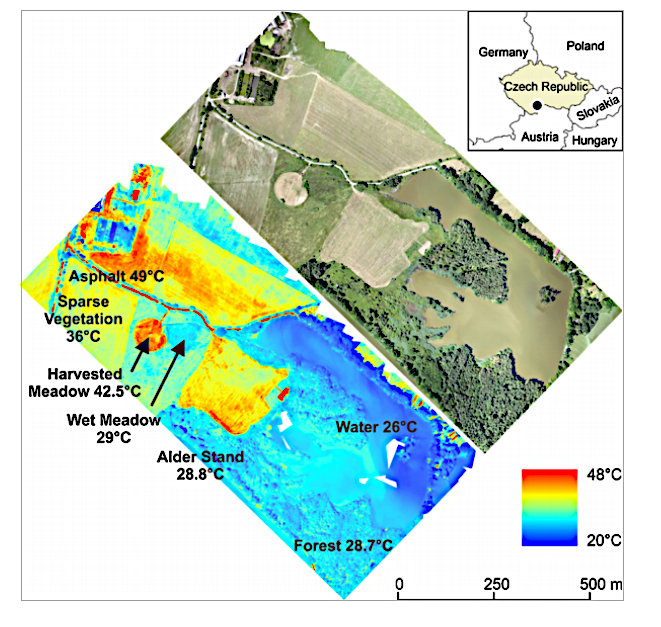
Figure 2: An illustration of the cooling effects of different landcover in a mixed purpose section of land, Czech Republic. Source: Ellison et al. (2017), adapted from Hesslerová et al. (2013).
Total land cover by homegardens can be substantial. For example, 14.3% of the total land area of Sri Lanka is said to be dedicated to homegardens with between 54 and 508 timber trees per ha (FAO, 2009). Land cover by Indonesian homegardens is estimated to be 10.3 million ha (IVEGRI, 2014) with an average of 34 trees per plot and the most common plot size of 0.1875 ha (Roshetko et al., 2002); the average homegarden size is estimated to be 0.02 ha (Marten, 1986). Combining these figures suggests a total of 17.5 billion trees in homegardens in Indonesia alone(((10.3 x 106)/0.2) x 34); a considerable amount of shade helping to cool people, animals, and plants.
Flooding, wind, soil erosion
Despite potential decreases in total annual rainfall, climate change is bringing higher intensity precipitation events (Trenberth, 2011). These high-energy downpours exacerbate soil erosion - particularly problematic in drier regions. Trees in homegardens can help regulate water flows in various ways: roots penetrate deep into the soil allowing for deeper infiltration and increased organic matter (i.e. from leaf litter) can enhance the activity of soil fauna leading to better aggregate stability and higher macroporosity (Ellison et al., 2017). Ellison et al. (2017) also challenge the conventional view that trees lead to a linear degradation in recharging groundwater supplies – figure 4. This relationship is important to consider if land is undergoing a change of use to or from agroforestry homegardens.
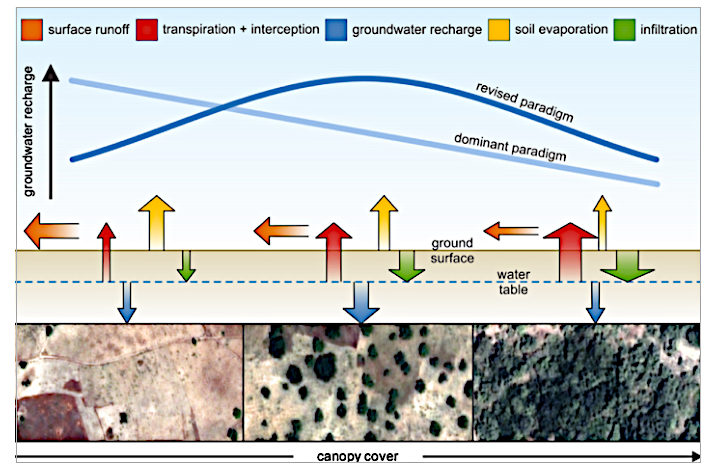
Figure 3: An illustration of the relationship of canopy cover to groundwater recharge. Arrows are proportionally sized based on volume water flows. Source: Ellison et al. (2017) adapted from Ilstedt et al. (2016).
Biodiversity
Increased rates of soil erosion have been found to correlate with loss of plant biodiversity (Berendse et al., 2015); many other factors caused by climate change will also alter habitats. The cumulative effect on biodiversity levels is uncertain, but losses could exceed those attributed to the habitat destruction caused by human encroachment (Bellard et al., 2012). A meta-analysis of studies examining changes to biodiversity found areas that are subject to increased temperatures, such as grasslands, savannah and rainforest, will be most negatively affected; increased precipitation appears to mitigate losses in other areas such as forest, woodland and heathland (Mantyka‐pringle et al., 2012). Biodiversity is important for humanity, amongst other things, it maintains ecological stability, provides food and harbours potential sources of new medicine (WHO, 2018). There is a strong link between the ecological composition of the landscape and the cultural practices, and activities, of its cultivators (Galluzzi et al., 2010).
Species richness is often found to be very high in homegardens; sometimes they provide habitat for endangered flora and fauna. In São Luís, North-eastern Brazil, homegardens are frequented by a bird classed as vulnerable on the IUCN red list - the Hyacinth Macaw (IUCN 1, 2017; Akinnifesi et al., 2010). The most commonly cultivated tree in homegardens in Upper Assam, India, was found to be Aquilaria malaccensis Lam. – classed as vulnerable on the IUCN red list (IUCN 2, 2017). Allotments typically have long growing seasons and high floral diversity, providing habitat for pollinating insects including diverse bee and butterfly populations and soil microbes (Lin et al., 2015). Additional benefits include higher populations of pest predators and pest pathogens (Lin et al., 2015). In diverse agroecosystems, substitute organisms can fulfil the function of species that are lost or so reduced in numbers they are no longer be functional within their niche (Altieri et al., 2015). High biodiversity also appears to help synchronize phenological changes between different organisms, reducing the potential negative consequences of sudden climate variation over consecutive seasons (Bartomeus et al., 2013).
Agrobiodiversity refers to the subset of biodiversity pertaining to agricultural production; it includes crops, livestock, soil organisms, insects, and non-domesticated animals that make use of agricultural habitat (Thrupp, 2000). Homegardens are generally considered to be high in agrobiodiversity using multi-storey planting and allowing for succession over space and time (Hoogerbrugge & Fresco, 1993). In Eastern Tyrol, an average of 42 species per homegarden, with a cumulative total of 587 species, were identified (Vogl & Vogl-Lukasser, 2003). Cultivation of landraces is also commonplace. Landraces develop through selection rather than deliberate breeding and can have a much more diverse genetic makeup than commercially developed crops, which gives them a high level of resilience to pests, diseases and environmental changes (Negri, 2005; Negri & Polegri, 2009). Various strains are cultivated within each homegarden for example, up to ten different varieties of potato could be found in a single plot in the Andes (Brush et al., 1992).
The value of this diverse germplasm is not limited to the region in which it is cultivated. The International Treaty on Plant Genetic Resources for Food and Agriculture - IT PGRFA - enables the sharing of plant genetic resources between signatories (FAO, 2018). Standard Material Transfer Agreements ensure that any commercial benefit obtained as the result of exchanging germplasm leads to a percentage of profits being deposited in a sharing fund. So far, over 100,000 strains of rice have been collected and stored as a result of this agreement (FAOVideo, 2009). Andean potato farmers, unable to cultivate some strains of potato due to temperature change, have been able to preserve germplasm, and breed new strains (FAOVideo, 2009). The resources contained within homegardens are already helping to build global resilience as we adapt to the detrimental effects of a changing climate.
Food security
The global population is forecast to continue to grow considerably throughout the 21st century – figure 3. Simultaneously, climate change is forecast to affect aggregate crop yields adversely for core staple foods such as rice, wheat, and maize (Challinor et al., 2014). Homegardens are considered a valuable time-tested nutritional resource for people with low incomes, especially in economically disadvantaged regions (Galhena et al., 2013). A study of Vietnamese farmers found that they were reliant on their homegarden for food and to maintain livestock in times when commercial crops failed (Nguyen et al., 2013). In addition, these farmers made a deliberate choice to cultivate resilient tree species within their homegardens to enhance their food security during challenging periods.
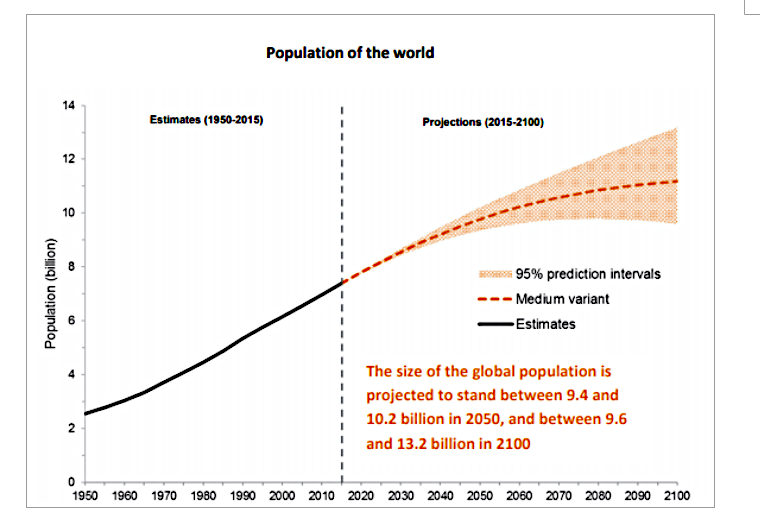
Figure 4: Forecast global population increases over time. Source: (UN, 2017)
Despite their importance to indigenous populations, homegardens in some areas are under threat. One such challenge has emerged in Uganda. The country has a national program entitled, ‘Uganda Vision 2040’, which includes the goal of replacing subsistence practices (homegardens) – figure 4 - with large scale industrialized agriculture – figure 5 (NPA of Uganda, 2007). Climate change is used to justify this national program of change: “Critical measures to prevent erosion of climate security, including viable food production and personal health, need to be assured.” (NPA of Uganda, 2007). The Uganda Vision 2040 brochure is a paradoxical piece of marketing; the preamble suggests that Uganda has ample water resources, yet a later section acknowledges the likelihood of water shortages caused by the changing climate (NPA of Uganda, 2007).
A predictive model for the outcome of the Uganda Vision 2040 program suggests that the new system will significantly increase the calorific productivity of food crops (Whitney et al., 2017). However, Whitney et al. (2017) also forecast a negative impact on the consumption of many micronutrients due to the loss of the diverse, nutrient-rich foods grown in homegardens. It also cannot be assumed that increased production will benefit the peasant population; food may be exported or priced, so only the wealthier portion of the population can afford it.
Pressures on food production do not have to be addressed solely through industrialization. Educational programs can enhance the productivity of homegardens: a project in Bangladesh provided technical support, access to seed, and knowledge sharing systems, resulting in an additional 200g of fresh produce per person per day (Marsh, 1998). The Indonesian Vegetable Research Institute has provided theoretical and practical training to staff from the ministry of agriculture to help them recognize the importance of homegardens to national food security (IVEGRI, 2014).
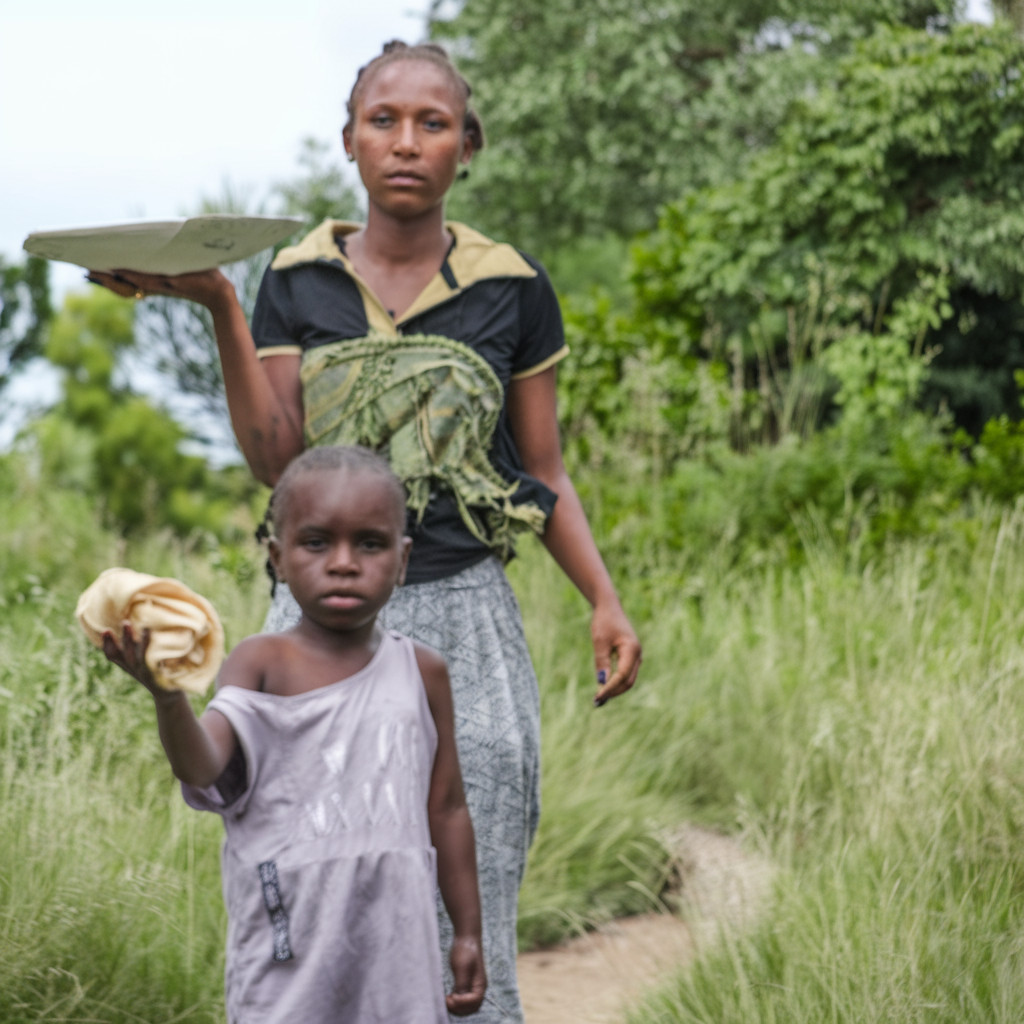
Figure 5: A female subsistence farmer with a child in Uganda. Source: (Bonzom, 2014)
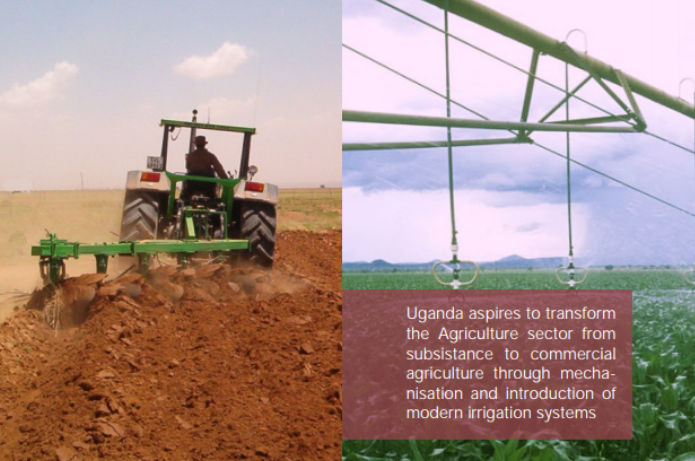
Figure 6: The future vision for agriculture in Uganda according to their National Planning Authority. Source: Adapted from (NPA of Uganda, 2007).
Bioprospecting, herbs and medicine.
Deforestation in Africa has been linked to migration and conflict induced by pressures associated with climate change (Reuveny, 2007). A study of homegardens in the Ambo region of Ethiopia found that local herbs and spices were being preserved through cultivation in homegardens as encroaching deforestation was causing the loss of wild habitat (Zuberi et al., 2014). Some of these plants have particularly useful nutritional or medicinal uses, including Ocimum sp. and Thymus being used to treat whooping cough, inflammation, and tuberculosis. It is not only the plants that are being conserved but also their uses and methods of preparation. This demonstrates that homegardens have the potential as resources for bioprospecting. Climate change will carry novel risks to human health (Wu et al., 2016), it is important to protect valuable resources that could lead to the discovery of useful new medicines. The ethical exploitation of beneficial resources, in accordance with significant international agreements such as the CBD and TRIPS, can avoid accusations of biopiracy and help to protect and nurture homegarden areas (CBD, 1992; World Trade Organization, 1994).
Summary
The evidence suggests that well-managed homegardens can be effective in helping to buffer the effects of climate change. They can sequester and store carbon, harbour biodiversity, protect against unpredictable seasonality, mitigate high energy weather events and contribute to the conservation of biodiversity. Measuring their precise value is difficult as they encapsulate complex social, economic and ecological processes, many of which have not been covered here. Homegardens that expand into mature natural habitat, especially forests, may have negative effects in terms of C emissions and biome composition. However, they also mitigate deforestation and reduce pressures on urbanisation, provide populations with low-impact homes, occupation, community and a resilient source of nutrition; some compromises may be required.
People cultivating homegardens in South East Asia, an area that is highly sensitive to the effects of climate change, have been adopting effective climate-sensitive agronomic practices for some time. Their decision to do so is influenced by their level of education and access to information and other resources (Weerahewa et al., 2012). The UN REDD programme, primarily concerned with reducing C emissions from deforestation, can incorporate long-term plans for the maintenance and expansion of homegardens providing a valuable source of expertise and support (UN-REDD, 2016; Bradley et al., 2016). Harnessing strategies of education, support and good governance can enhance both the productivity and ecological value of homegardens. This seems preferable to displacing those reliant upon them by introducing systems of industrialized agriculture, and it is more congruent with the aims of the Convention on Biological Diversity and UN goals for sustainable development 2030 (Watson & Eyzaguirre, 2001; Montagnini & Metzel, 2017).
References
Aguilar-Støen, M., Moe, S. R. & Camargo-Ricalde, S. L., 2009. Home gardens sustain crop diversity and improve farm resilience in Candelaria Loxicha, Oaxaca, Mexico. Human Ecology, 37(1), pp. 55-77.
Akinnifesi, F. S. W. et al., 2010. Biodiversity of the urban homegardens of São Luís city, Northeastern Brazil. Urban Ecosystems, 13(1), pp. 129-146.
Altieri, M. A., Nicholls, C. I., Henao, A. & Lana, M. A., 2015. Agroecology and the design of climate change-resilient farming systems. Agronomy for Sustainable Development, 35(3), p. 869–890.
Bartomeus, I. et al., 2013. Biodiversity ensures plant–pollinator phenological synchrony against climate change. Ecology letters, 16(11), pp. 1331-1338.
Baveye, P., Berthelin, J., Tessier, D. & Lemaire, G., 2018. The “4 per 1000” initiative: A credibility issue for the soil science community?. Geoderma, Volume 309 (Supplement C), pp. 118-123.
Bellard, C. et al., 2012. Impacts of climate change on the future of biodiversity. Ecology letters, 15(4), pp. 365-377.
Berendse, F., van Ruijven, J., Jongejans, E. & Keesstra, S., 2015. Loss of plant species diversity reduces soil erosion resistance. Ecosystems, 18(5), pp. 881-888.
Bonzom, P., 2014. Turning subsistence farmers into market suppliers in Africa. [Online]
Available at: http://www.undp.org/content/undp/en/home/blog/2014/7/9/turning-subsistence-farmers-into-market-suppliers-in-africa.html
[Accessed 02 April 2018].
Bradley, A. et al., 2016. Final Report on Land Tenure Considerations in Sri Lanka’s Proposed National REDD+ Strategy, Pelawatta: Sri Lanka UN-REDD Programme .
Brush, S. B., Taylor, J. E. & Bellon, M. R., 1992. Technology adoption and biological diversity in Andean potato agriculture. Journal of Development Economics, 39(2), pp. 365-387.
Burghardt, W. & Schneider, T., 2018. Bulk density and content, density and stock of carbon, nitrogen and heavy metals in vegetable patches and lawns of allotments gardens in the northwestern Ruhr area, Germany. Journal of Soils and Sediments, 18(2), pp. 407-417.
Calvet-Mir, L., Gómez-Baggethun, E. & Reyes-García, V., 2012. Beyond food production: Ecosystem services provided by home gardens. A case study in Vall Fosca, Catalan Pyrenees, Northeastern Spain. Ecological Economics, Volume 74, pp. 153-160.
CBD, 1992. Convention on biological diversity.
Challinor, A. J. et al., 2014. A meta-analysis of crop yield under climate change and adaptation. Nature Climate Change, 4(4), pp. 287-291.
Edmondson, J. L., Davies, Z. G., Gaston, K. J. & Leake, J. R., 2014. Urban cultivation in allotments maintains soil qualities adversely affected by conventional agriculture. Journal of Applied Ecology, 51(4), pp. 880-889.
Ellison, D. et al., 2017. Trees, forests and water: Cool insights for a hot world. Global Environmental Change, Volume 43, pp. 51-61.
FAO , 2009. Sri Lanka Forestry Outlook Study. Asia Pacific Forestry Outlook Sector Outlook Study II, Working Paper No. APFSOS II/WP/2009/29. Bangkok: FAO Regional Office for Asia and the Pacific.
FAO, 2018. International Treaty on Plant Genetic Resources for Food and Agriculture. [Online]
Available at: http://www.fao.org/plant-treaty/overview/en/
[Accessed 30 March 2018].
FAOVideo, 2009. International Treaty on Plant Genetic Resources for Food and Agriculture. [Online]
Available at: https://www.youtube.com/watch?v=dYYWe-0Dvyc
[Accessed 31 March 2018].
Field, C. B. & Barros, V. R., 2014. Climate change 2014: impacts, adaptation, and vulnerability, Cambridge: Cambridge University Press.
Galhena, D. H., Freed, R. & Maredia, K. M., 2013. Home gardens: a promising approach to enhance household food security and wellbeing. Agriculture & Food Security, 2(1), p. 8.
Galluzzi, G., Eyzaguirre, P. & Negri, V., 2010. Home gardens: neglected hotspots of agro-biodiversity and cultural diversity. Biodiversity and conservation, 19(13), pp. 3635-3654.
Hesslerová, P., Pokorný, J., Brom, J. & Rejšková–Procházková, A., 2013. Daily dynamics of radiation surface temperature of different land cover types in a temperate cultural landscape: Consequences for the local climate. Ecological engineering, Volume 54, pp. 145-154.
Hoogerbrugge, I. & Fresco, L., 1993. Homegarden systems: agricultural characteristics and challenges. International Institute for Environment and Development, Volume 39, p. 21.
Ilstedt, U. et al., 2016. Intermediate tree cover can maximize groundwater recharge in the seasonally dry tropics. Scientific reports, Volume 6, p. 21930.
IUCN 1, 2017. Anodorhynchus hyacinthinus. [Online]
Available at: http://www.iucnredlist.org/details/22685516/0
[Accessed 3 April 2018].
IUCN 2, 2017. Aquilaria malaccensis. [Online]
Available at: http://www.iucnredlist.org/details/32056/0
[Accessed 29 March 2018].
IVEGRI, 2014. Improving Food and Nutrition Security through Development of Home Gardens, Bandung: Indonesian Vegetable Research Institute.
Kim, D. G., Kirschbaum, M. U. & Beedy, T. L., 2016. Carbon sequestration and net emissions of CH4 and N2O under agroforestry: Synthesizing available data and suggestions for future studies. Agriculture, Ecosystems & Environment, Volume 226, pp. 65-78.
Kyoto Protocol, 1997. United Nations framework convention on climate change, Kyoto: United Nations.
Lin, B. B., Philpott, S. M. & Jha, S., 2015. The future of urban agriculture and biodiversity-ecosystem services: challenges and next steps. Basic and applied ecology, 16(3), pp. 189-201.
Lin, B. S. & Lin, Y. J., 2010. Cooling effect of shade trees with different characteristics in a subtropical urban park. HortScience, 45(1), pp. 83-86.
Liu, Z. et al., 2017. Global and regional changes in exposure to extreme heat and the relative contributions of climate and population change. Scientific Reports, Volume 7, p. 43909.
Mantyka‐pringle, C. S., Martin, T. G. & Rhodes, J. R., 2012. Interactions between climate and habitat loss effects on biodiversity: a systematic review and meta‐analysis. Global Change Biology, 18(4), pp. 1239-1252.
Marsh, R., 1998. Building on traditional gardening to improve household food security. Food nutrition and agriculture, pp. 4-14.
Marten, G. G., 1986. Traditional Agriculture in Southeast Asia:A Human Ecology Perspective. 1st ed. Boulder: Westview Press.
Mattsson, E., Ostwald, M., Nissanka, S. P. & Marambe, B., 2013. Homegardens as a multi-functional land-use strategy in Sri Lanka with focus on carbon sequestration. Ambio, 42(7), pp. 892-902.
Montagnini, F. & Metzel, R., 2017. The Contribution of Agroforestry to Sustainable Development Goal 2: End Hunger, Achieve Food Security and Improved Nutrition, and Promote Sustainable Agriculture. In: Advances in Agroforesty: Volume 12. Berlin: Springer, pp. 11-45.
Negri, V., 2005. Agro-biodiversity conservation in Europe: ethical issues. Journal of Agricultural and Environmental Ethics, 18(1), pp. 3-25.
Negri, V. & Polegri, L., 2009. Genetic diversity in home gardens in Umbria a cowpea case study. In Proceedings of a workshop on crop genetic resources in European home gardens.. Bioversity international, Rome, Italy, pp. 55-61.
Nguyen, Q., Hoang, M. H., Öborn, I. & van Noordwijk, M., 2013. Multipurpose agroforestry as a climate change resiliency option for farmers: an example of local adaptation in Vietnam.. Climatic change, 117(1-2), pp. 241-257.
NPA of Uganda, 2007. Uganda Vision 2040, Kampala: The National Planning Association of Uganda.
Reuveny, R., 2007. Climate change-induced migration and conflict. Political Geography, Volume 26, pp. 656-673.
Rogelj, J. et al., 2016. Paris Agreement climate proposals need a boost to keep warming well below 2 C. Nature, 534(7609), pp. 631-640.
Roshetko, J. M., Delaney, M., Hairiah, K. & Purnomosidhi, P., 2002. Carbon stocks in Indonesian homegarden systems: Can smallholder systems be targeted for increased carbon storage?. American Journal of Alternative Agriculture, 17(3), pp. 138-148.
Satterthwaite, D., 2009. The implications of population growth and urbanization for climate change. Environment and Urbanization, 21(2), pp. 545-567.
Thrupp, L. A., 2000. Linking agricultural biodiversity and food security: the valuable role of agrobiodiversity for sustainable agriculture. International affairs, 76(2), pp. 283-297.
Trenberth, K. E., 2011. Changes in precipitation with climate change. Climate Research, 47(1-2), pp. 123-138.
UN, 2017. World Population Prospects. [Online]
Available at: https://esa.un.org/unpd/wpp/Publications/Files/WPP2017_DataBooklet.pdf
[Accessed 10 April 2018].
UN-REDD, 2016. Partner Countries. [Online]
Available at: http://www.un-redd.org/partner-countries
[Accessed 10 April 2018].
Vogl, C. R. & Vogl-Lukasser, B., 2003. Tradition, dynamics and sustainability of plant species composition and management in homegardens on organic and non-organic small scale farms in Alpine Eastern Tyrol, Austria. Biological agriculture & horticulture, 21(4), pp. 349-366.
Vogl, C. R., Vogl-Lukasser, B. & Puri, R. K., 2004. Tools and methods for data collection in ethnobotanical studies of homegardens. Field methods, 16(3), pp. 285-306.
Watson, J. W. & Eyzaguirre, P. B., 2001. Home gardens and in situ conservation of plant genetic resources in farming systems: Proceedings of the Second International Home Gardens Workshop. Witzenhausen: IPGRI.
Weerahewa, J. et al., 2012. Are homegarden ecosystems resilient to climate change? An analysis of the adaptation strategies of homegardeners in Sri Lanka. APN Science Bulletin, 2(2), pp. 22-27.
Whitney, C. W. et al., 2017. Homegardens and the future of food and nutrition security in southwest Uganda. Agricultural Systems, Volume 154, pp. 133-144.
WHO, 2018. Climate change and human health: Biodiversity. [Online]
Available at: http://www.who.int/globalchange/ecosystems/biodiversity/en/
[Accessed 09 April 2018].
Wildhaber, C., 2010. A Comparative Study of Rural and Urban Allotments in Gravesham, Kent, UK. In: M. Pardo-de-Santayana, A. Peironi & R. K. Puri, eds. Ethnobotany in the new Europe: people, health, and wild plant resources. Oxford: Berghahn Books, pp. 329-358.
World Trade Organisation, 1994. TRIPS: Agreement on Trade-Related Aspects of Intellectual Property Rights. In: Marrakesh Agreement Establishing the World Trade Organization, Annex 1C, 1869 U.N.T.S. 299, 33 I.L.M. 1197. s.l.:World Trade Organisation.
Wu, X. et al., 2016. Impact of climate change on human infectious diseases: Empirical evidence and human adaptation. Environment international, Volume 86, pp. 14-23.
Zuberi, M. I., Kebede, B., Gosaye, T. & Belachew, O., 2014. Species of herbal spices grown in the poor farmers’ home gardens of West Shoa, Highlands of Ethiopia: an ethnobotanical account. J Biodivers Environ Sci, Volume 4, pp. 164-185.